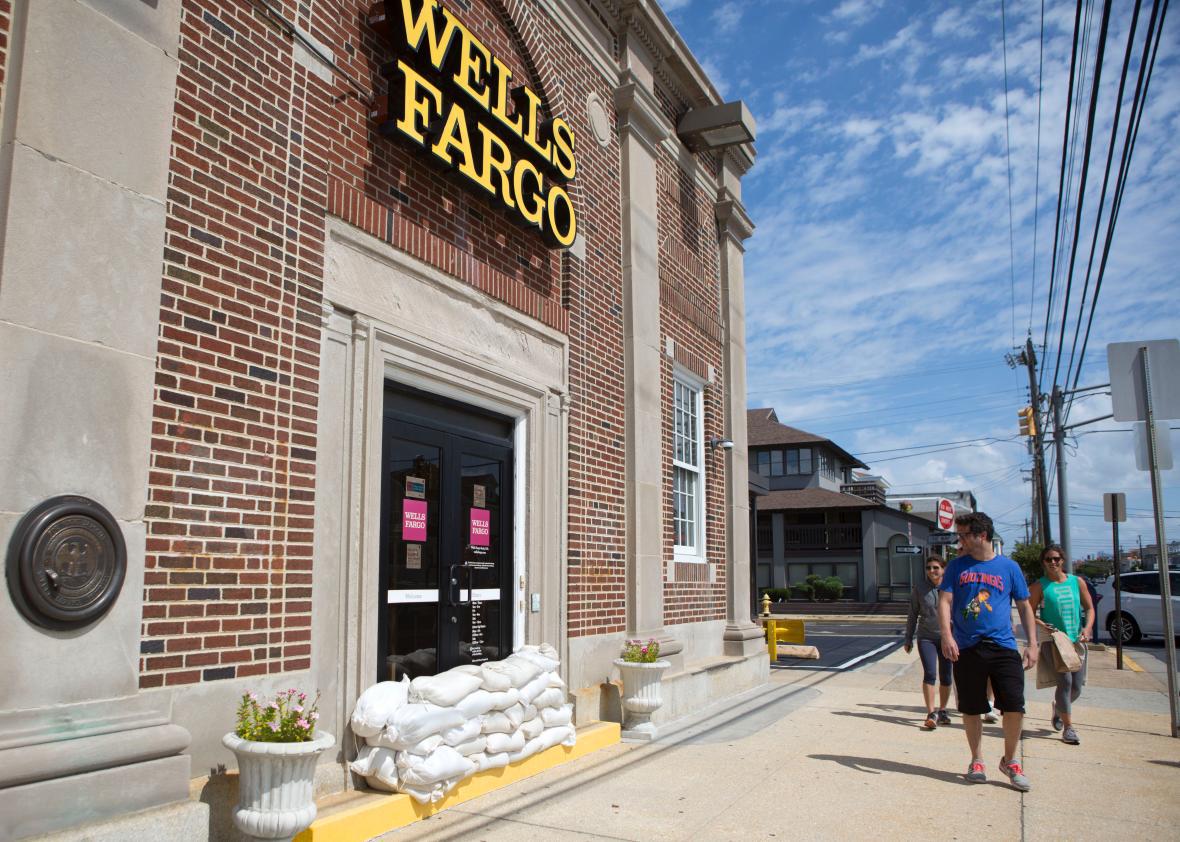Federal and California state authorities slammed Wells Fargo with $185 million in fines on Thursday, after multiple investigations revealed employees of the bank had opened up millions of checking accounts and credit cards without the permission of their customers. As of result of that behavior, the company said it has fired more than 5,000 employees, or 1 percent of its workforce. As far as we know, none of those fired employees come from the C-suite.
That’s a pity.
Even if bank executives did not personally sign up customers for the fraudulent accounts, they bear as much—if not more—responsibility as the low-level employees who got caught holding the bag.
Wells Fargo’s woes originate in a practice called cross-selling. That’s when salespeople are urged to encourage existing bank customers to use multiple bank products. The practice has long been around, but many financial services firms got more aggressive about it after 2008, as a combination of regulatory changes and the low-interest rate environment put pressure on their bottom lines.
And none may have been more aggressive about cross-selling than Wells Fargo. It promoted the practice in its annual reports and set ambitious goals for its employees, offering generous bonuses to those who could meet seemingly impossible sales quotas and threatening those who could not keep up with termination.
According to the Consumer Financial Protection Bureau, beginning in 2011, thousands of Wells Fargo employees forged customer signatures of paperwork so that money could be moved out of the existing legitimate checking and savings accounts into new, unauthorized ones. Other times, they issued credit cards to customers without their knowledge. In some cases, the activities seemed to verge on identify fraud, like when employees used fake email addresses to secretly sign existing customers up for online checking accounts, or assigned PINS to the unwanted—and unknown—debit cards.
Often, customers didn’t know what happened until the automatic withdrawals—again, unauthorized—caused them to bounce checks and rack up overdraft charges. Other times, they would be required to pay the annual fees on the unknown and unwanted credit cards.
And when those customers attempted to seek legal redress? Wells Fargo fought back and judges dismissed the cases. Unbelievably, the mandatory arbitration agreements customers signed when they opened their original accounts also covered the fraudulent activity.
The scheme—or schemes—began to unravel in 2013 as a result of an investigation by the Los Angeles Times. Managers complained to the paper about unrealistic sales quotas that caused many of their colleagues to falsify sales. “We were constantly told we would end up working for McDonald’s,” one former employee told the paper. “If we did not make the sales quotas … we had to stay for what felt like after-school detention, or report to a call session on Saturdays.” One banker described catching underlings pressuring a homeless woman into opening multiple checking and savings accounts.
The Los Angeles Times investigation piqued the interest of the Los Angeles City Attorney’s office, which filed a lawsuit against the bank in 2015. That, in turn, attracted the attention of federal authorities, including the Consumer Financial Protection Bureau and the Office of the Comptroller of the Currency. The $185 million fine is divided between the three groups. The CFPB receives $100 million. That’s the largest such fine ever issued by the CFPB, which should give you some idea of how serious this misbehavior is.
Wells Fargo says in addition to paying the fines, it will revamp its sales tactics and issue refunds to any customer who suffered financial harm. That’s not enough. It wasn’t just a few—or a few thousand—less-than-honest employees that allowed this to happen.
Rot begins at the top.
